
Development of a complex protection system for aeronautical equipment at Specimpex Kft.
System for detecting the launch and movement of missiles
of man-portable air defense systems
Currently, one of the real threats to civil aviation remains the threat of attack using man-portable air defense systems (MPADS).
An important component of protection against such weapons is the missile approach warning system (MAWS).
Work on the development of a warning system was successfully carried out in 2018-2020 in Hungary.
During research work on the topic „Development of a complex protection system for aeronautical equipment at Specimpex Kft.” carried in the project scope GINOP-2.1.2-8-1-4-16-2017-00048, by the specialists of Specimpex Kft. the Mirage system was developed., which allows you to detect attacking missiles by radiation of rocket engine plume.
Mirage belongs to the category of passive two-channel optoelectronic systems operating in the ultraviolet solar-blind and infrared ranges.
Two prototypes of the system were manufactured and successfully tested.
Currently, one of the real threats to civil aircraft remains the danger of being attacked using man-portable air defense systems (MPADS). This danger exists not only in the zones of local military conflicts, but also where the action of various terrorist groups is possible.
The first known case of an attempt to use MPADS against civilian aircraft dates to 1973, when members of the Black September group tried to hit Israeli planes at a Rome airport but were neutralized by security officials before they even managed to carry out the attack.
The first successful case of such use is an attack carried out by the North Vietnamese on a Douglas C-54D of the South Vietnamese airline Air Vietnam in 1975, which killed 26 people.
Since then, about 30 percent of such attacks have resulted in crash landings with minimal harm to people, but about 70 percent have resulted in plane crashes, the number of victims of which has reached 900.
How can such threats be countered?
Obviously, civil aircraft cannot use maneuvering to combat MPADS due to their technical limitations.
Of the technical countermeasures, the most common are the so-called infrared countermeasures (IRCM) to counter infrared homing ("heat-seeking") missiles, which include the vast majority of MPADS missiles. As means of IRCM, for example, the launch of false thermal targets ("flares") can be used, which creates many additional sources of high-intensity infrared radiation, or source of directional radiation can be used, which disrupting the homing head.
In both the first and the second cases, the aircraft must be equipped with a missile approach warning system (MAWS), which detects an attack, determines the direction of the threat, and issues a command to activate countermeasures.
Such systems are being developed and manufactured by several leading companies.
Work on the development of a warning system was successfully carried out in 2018-2020 in Hungary.
During research work on the topic „Development of a complex protection system for aeronautical equipment at Specimpex Kft.”, carried in the project scope GINOP-2.1.2-8-1-4-16-2017-00048, by the specialists of Specimpex Kft. the Mirage system was developed.
The system works in automatic mode and solves the following tasks:
- detection of the launch of an anti-aircraft missile;
- determining the angular coordinates of a flying rocket;
- notification of the crew about a missile attack;
- automatic supply of a signal for triggering a device for ejecting flares.
The detection of an attacking missile is carried out by the radiation of the plume of its rocket engine. The system is a passive dual channel opto-electronic warning system for missile launches MPADS. The use of information arriving simultaneously through two channels makes it possible to increase the probabilistic characteristics of threat detection.
Systems radiation detectors operate in the following wavelengths:
- parts of the ultraviolet, the so-called solar-blind range, limited to wavelengths from 220 to 300 nanometers;
- parts of the mid-infrared range, limited to wavelengths from 2.8 to 3.2 micrometers.
The choice of these two ranges is based on the following.
Solar radiation in the wavelength range of 180 - 320 nanometers is almost completely absorbed in the upper atmosphere, due to which this range is characterized by a target environment with minimal natural interference. However, the radiation of the MPADS rocket engine plume in this range is not so significant, which requires the use of Image intensifier with a double microchannel plate in the radiation detector to provide the necessary amplification.
At the same time, the mid-infrared range corresponds to the maximum radiation of the rocket plume, but the level of natural interference in this range can be commensurate with the level of the useful signal.
The use of information arriving simultaneously through two channels can significantly increase the probabilistic characteristics of threat detection.
The fundamental difference between the Mirage system and the existing similar systems is the use of new information processing algorithms, starting from the primary processing of signals from the optical detectors of the system and ending with the system deciding about the presence of a threat.
There are two main qualitative features of the Mirage system:
- the use of algorithms in the processing of signals from optical detectors, which are based on statistical methods, which allow to exclude the influence of various kinds of interference on the measurement result of dynamic data, and, consequently, to increase significantly the system's resistance to interference;
- using, when deciding, the method of modeling the flight path of a MPADS missile based on the analysis of data on the elevation angle and azimuth of the target, the Irradiance of detectors, the change in these parameters over time, and comparing them with models that describe typical missile guidance algorithms for various MPADS.
All this allows, in comparison with similar systems, to significantly reduce the likelihood of false alarms and reduce the time required for the system to decide.
The system includes a control and display panel and 4 blocks of optical sensors.
Optical sensor blocks are installed on the aircraft with the orientation of their optical axes in azimuth (relative to the longitudinal axis of the aircraft) 45º, 135º, 225º and 315º and in elevation 45º, thus providing a viewing angle of 360ºx180º.
Blocks of optical sensors are independent devices and the failure of one of them or its destruction does not lead to disruption of the rest of the system components.
The external view of the control and display panel and the block of optical sensors is shown in the figure 1.
During the project, two prototypes of the Mirage system were manufactured and successfully tested.
Based on the results of research and testing of prototypes, the directions of further development of the system were determined to achieve parameters that ensure its competitiveness in the market for MAWS.
Overall dimensions and layout of the prototype optical sensors block of the Mirage system is shown in Fig.2, overall dimensions of the prototype of the control and display panel of the Mirage system - in Fig. 3 and Block diagram of MAWS Mirage in Fig 4.
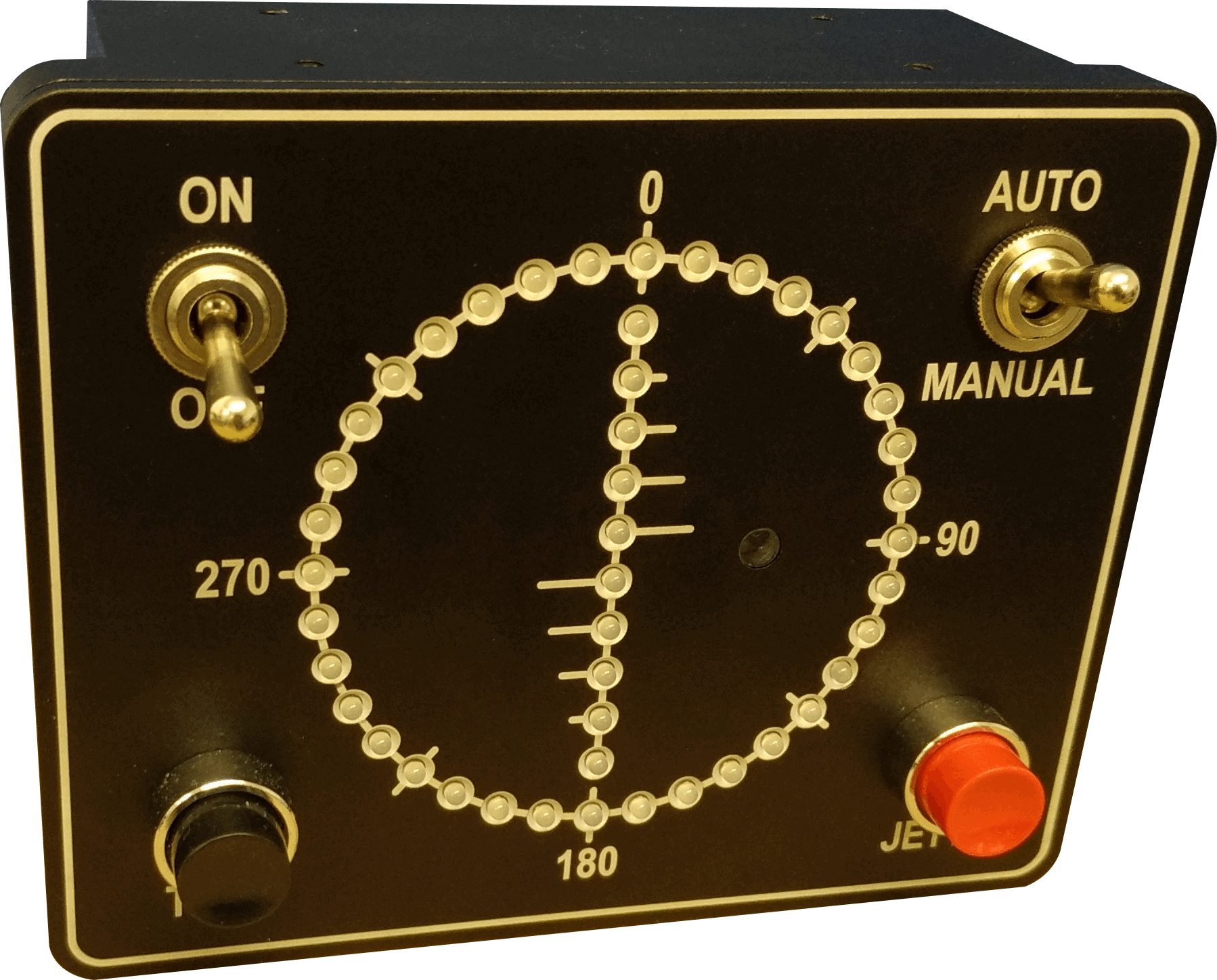
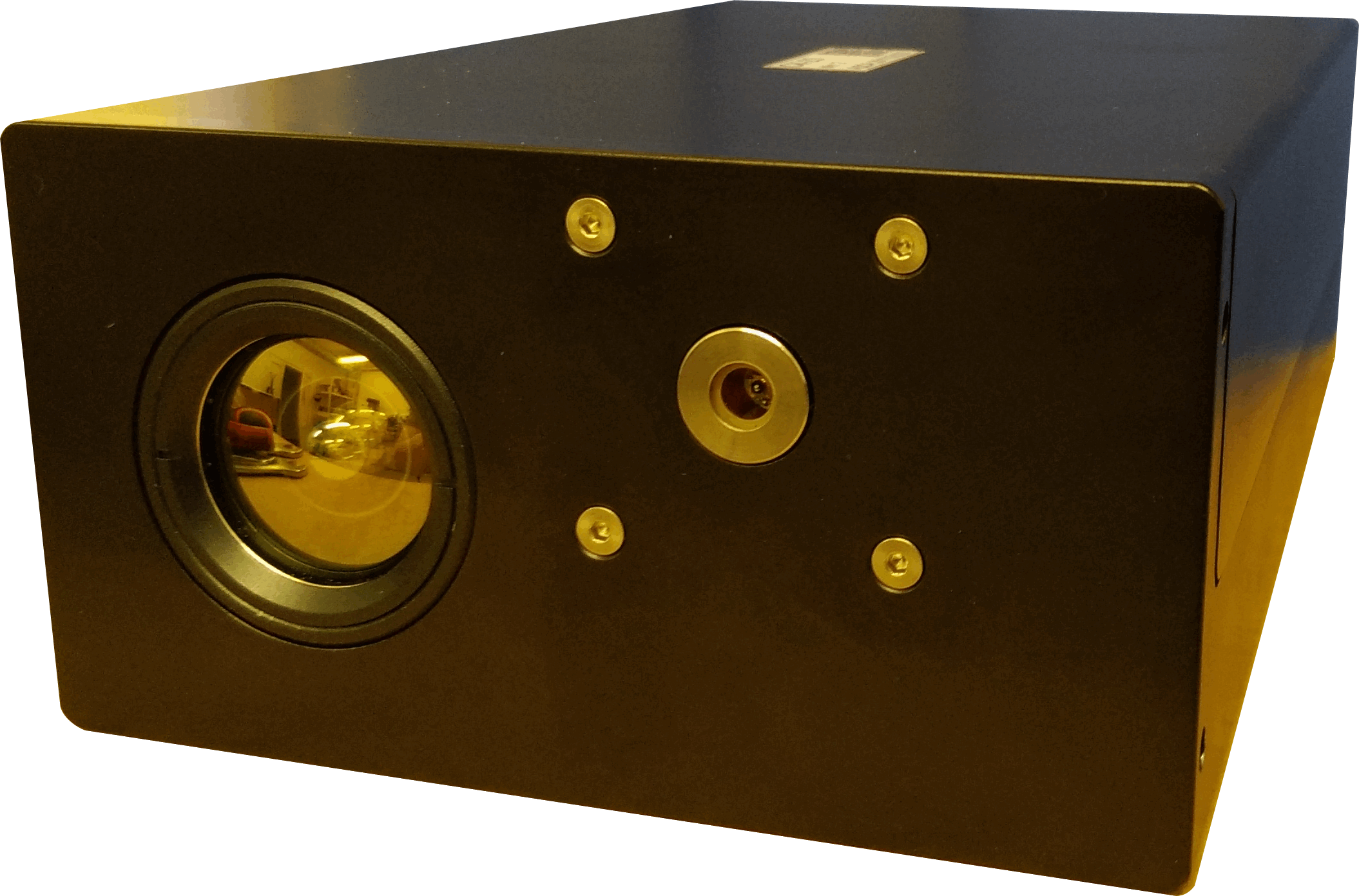
left - control and display panel, right - optical sensor block.
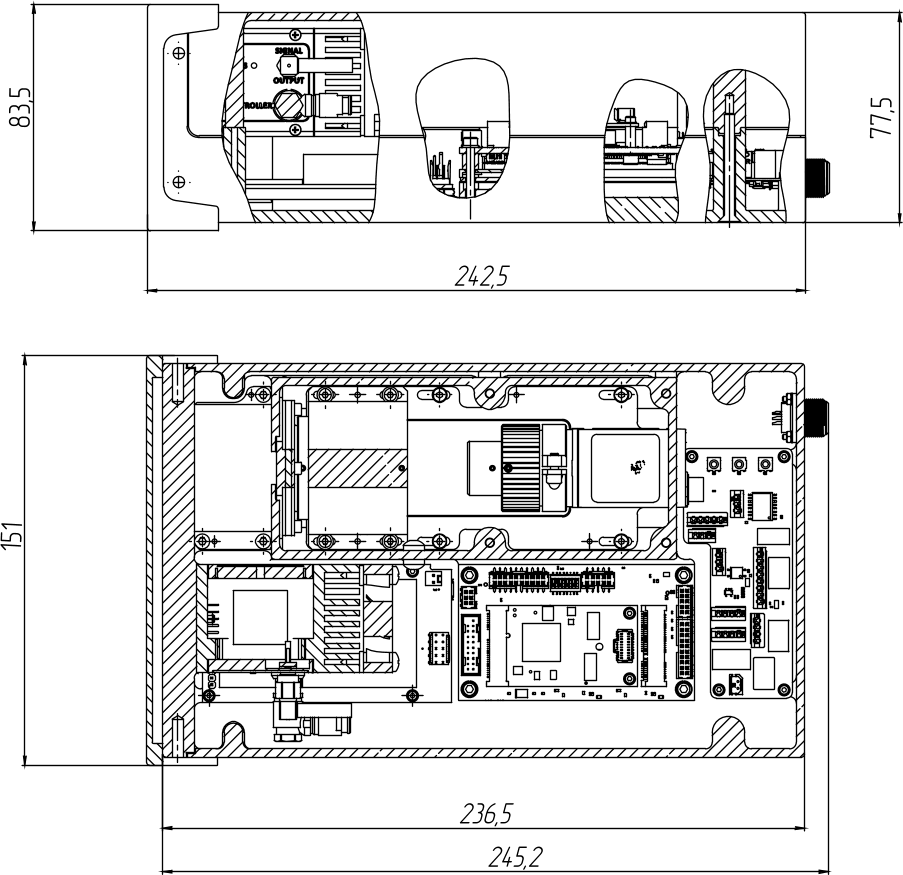
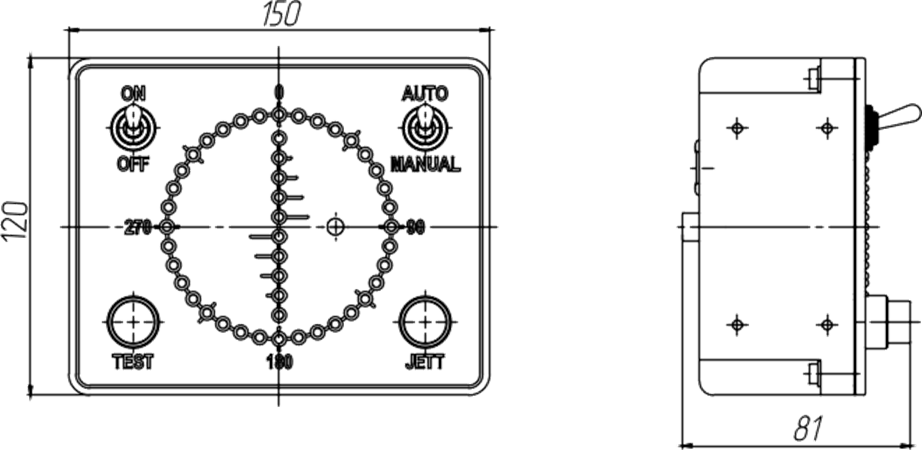
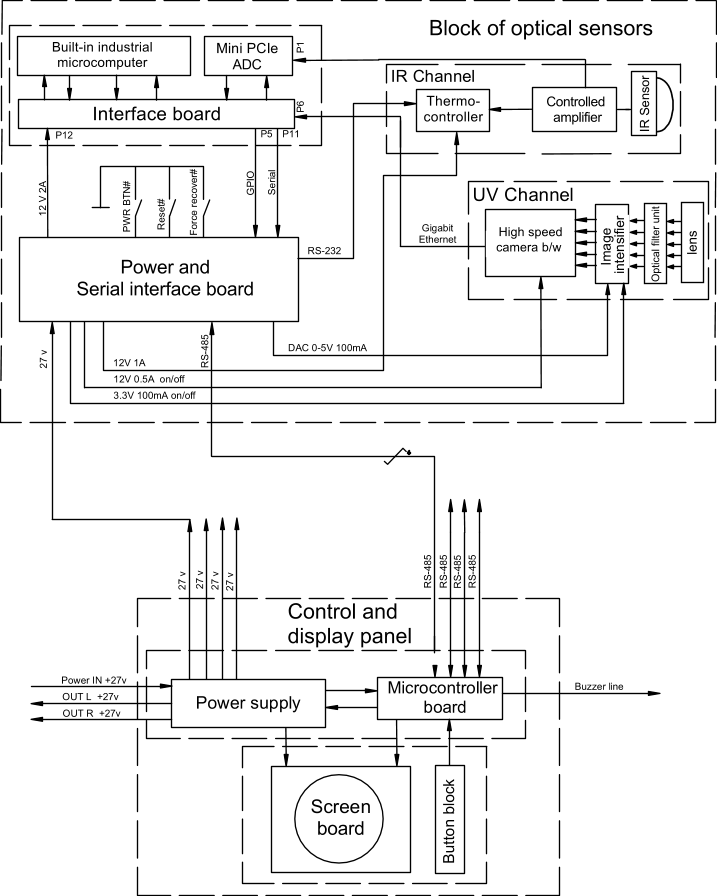
István Veres
Pályázatok
- GINOP-1.2.1-16-2017-00464 azonosítószámú projekt
légijármű védelmi rendszerének gyártása
- GINOP-2.1.2-8-1-4-16-2017-00048 azonosítószámú projekt
repüléstechnikai eszközök komplex védelmi rendszerének fejlesztése
- ÉAOP-1.1.1/AB-11-2012-0009 azonosítószámú projekt
alap- és épület-infrastruktúra fejlesztés
Sajtóközlemények
- Sajtóközlemény - légijármű védelmi rendszerének gyártása
2018. március 8.
- Sajtóközlemény - alap- és épület-infrastruktúra fejlesztés
2013. június 28.
Képgalériák






